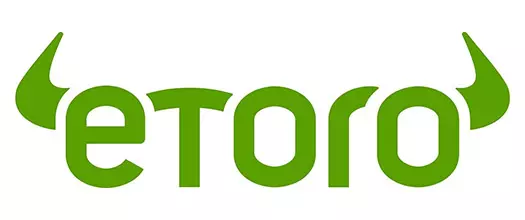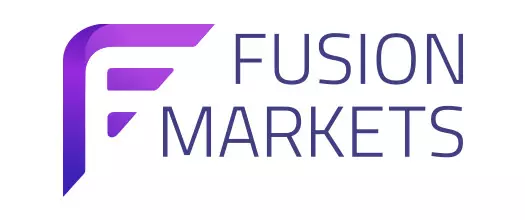- Jump to:
- Best Brokers with Real Money Forex Account
- When to Open an Account
- Things to Consider
- Account Types
- Banking
- Pricing
- Leverage
- Risk Management
- How Much You Can Risk
- Limit the Leverage
- Stop Losses
- Negative Balance Protection
- Take Profit Orders
- Additional Tips
With an average daily turnover of more than $7.51 trillion, the foreign exchange market is the largest financial market in the world. Available to both institutional and retail traders, it offers them the opportunity to trade a wide variety of currency pairs and generate substantial profits whilst speculating on economic events and the relative strength of currencies. To enter this exciting field, however, retail traders need to sign up with an online Forex broker and open a live, real-money account.
Most Forex brokers offer two main types of accounts – demo accounts and real-money accounts. Demo accounts are mostly used to try out different strategies and tactics or to become familiar with the trading platform provided by the broker. Real-money accounts, on the other hand, enable you to participate directly in the Forex market. When you open a real-money account, you will need to deposit funds before you can start trading.
 Plus500 USThis content applies only to Plus500 US and clients from the United States. Trading futures involves the risk of loss.
Plus500 USThis content applies only to Plus500 US and clients from the United States. Trading futures involves the risk of loss. eToro61% of retail investor accounts lose money
eToro61% of retail investor accounts lose money Fusion Markets74-89% of retail's CFD accounts lose money
Fusion Markets74-89% of retail's CFD accounts lose money FP Markets73.85% of retail investor accounts lose money
FP Markets73.85% of retail investor accounts lose money Global Prime74-89% of retail CFD accounts lose money
Global Prime74-89% of retail CFD accounts lose money Pepperstone75.5% of retail investor accounts lose money
Pepperstone75.5% of retail investor accounts lose money
While demo accounts and simulated trading do not involve any actual money, trading from a real-money account without the proper knowledge and strategy poses a real financial risk. Therefore, prospective traders who wish to enter the world of Forex should be aware of the dangers they will face once they start trading with their own money.
Our team has thoroughly evaluated all brokers listed below using TradingPedia’s exclusive methodology.
Main features of the best brokers with real money Forex accounts
- Brand
- Trading platforms
- Minimum deposit
- Regulations
- Trading instruments
- Spreads
- Leverage for Forex CFDs
- Leverage for Crypto CFDs
- Leverage for Indices CFDs
- Deposit methods
- Withdrawal Methods
- Commission per Lot
- Contact details
When to open a real money Forex account
If you have never traded on the Forex market before, it is a good idea to start with a demo account until you become familiar with the market and the trading platform your broker offers. Of course, many novices decide to start trading directly with real money, and in most cases they end up losing their initial investment. Trading currencies is difficult and requires knowledge, skill and experience – after all, there are more losers in the world of Forex than there are winners.
This is why it is essential to know when you are ready to open a live account – until you develop a solid, reliable and profitable system for trading, you should stick to practising with a demo account. Some traders claim a couple of weeks are sufficient for beginners to learn the mechanics of currency trading, whereas others believe that this “pretend” trading should continue for anywhere between 3 and 12 months.
The truth is that some traders never become successful even if they practise for years, whereas others find it easy to understand the inner workings of the foreign exchange market. Those who want to succeed in this field in the long term should know that if they are not capable of making profitable trades with a demo account, they will certainly lose their investment once real money and emotions are involved.
Things to consider when signing up
Once traders decide to transition from demo accounts to live trading with real money, they need to take a few things into account – what type of trading account they will need, what payment options they have, and how to protect themselves from financial ruin. Depending on the Forex broker they choose, they will be offered different trading conditions, although most real-money accounts are largely similar to one another.
It is always a good idea to read the broker’s terms and conditions and conduct research into the origins of the firm, whether it is regulated, and its overall reputation. This is an essential step, especially with relatively new Forex brokerages. Many traders have been scammed in the past, so it is advisable to stick with reputable brokers who have proven their reliability and trustworthiness over the years.
Account types
As we have mentioned above, Forex trading can be exceptionally exciting and profitable, but to be successful, individual traders need to compete with large banks, hedge funds and other institutional traders. For this, they need to select the right type of account because this choice will directly affect the volumes they can trade, the spreads they will pay, and the level of leverage they can use.
Based on the minimum and maximum lot requirements, there may be several account types – standard, mini, micro or VIP accounts, professional accounts, etc. Brokers offer different tiered programmes for their clients, but in most cases traders start with the smallest possible account. This allows them to invest relatively small amounts of money and place smaller trades.
The various account types have different requirements regarding the initial capital held by the trader, the margin percentage, the minimum required deposit, etc. They also affect pricing – smaller-sized accounts usually come with higher spreads even on major currency pairs.
Banking
Another important aspect of real-money accounts is banking – what payment options are available, how much the minimum deposit is, etc. In order to invest in a real-money Forex account, traders need to check the payment methods accepted by the broker.
Most brokers work with bank transfers, credit cards and digital wallets. Popular banking solutions include credit and debit cards from leading brands such as Amex, Visa and Mastercard, or e-wallets including Skrill (formerly MoneyBookers), Neteller and PayPal. Some brokers’ websites also process Bitcoin deposits and withdrawals. Many other cryptocurrencies are gaining popularity as well.
However, not all payment methods support withdrawals, which is why traders should always check the available deposit and withdrawal options. Additionally, Forex traders need to check the minimum deposit required to open a real-money trading account. It will vary depending on the particular broker and the type of account chosen. Beginner traders are advised to start with small deposits of $10 or $50 and gradually move to higher-tier accounts that require larger minimum deposits.
Pricing
Using the services of a professional Forex broker is not free, although registering a standard real-money account is free of charge. Brokers used to impose fees on every trade, but with the emergence of the Internet and online Forex brokers, firms began offering competitive pricing plans to new clients. One of these changes was the removal of such fees – this is specific to currency trading; there are still different fees when it comes to stock trading, for instance.
Nowadays, most brokers make a profit from Forex trades by having traders pay a spread – the difference between the price asked by the seller and the price offered by the buyer. Sometimes referred to as the bid/ask spread, it is displayed in pips and may range from 0.0 pips for institutional and raw-account traders to more than 20 pips for retail clients trading exotic pairs.
Pips (short for ‘point in percentage’) are the smallest price movements that an exchange rate can make for a particular currency pair. A pip is usually equal to $0.0001 for major pairs involving the US dollar – if EUR/USD moves from 1.1050 to 1.1052, for example, this is an increase of 2 pips. As you can see, paying 3 pips for a trade does not seem very costly, but it may affect one’s profits significantly in the long term.
While many brokers have adopted a zero-commission pricing model, usually only standard accounts with higher spreads charge no commission on Forex trades. Meanwhile, so-called raw accounts that reduce spreads significantly will apply a commission, which is charged both when opening and closing positions. It is worth mentioning that even when you pay a commission on your Forex trades, a low spread can still reduce the overall trading cost, making it more affordable than trading with a standard no-commission account.
Leverage
Another thing traders must keep in mind about real-money Forex accounts is that they will be using leverage, which is among the most attractive yet risky aspects of currency trading. In short, brokers offer leverage to their clients by allowing them to trade with borrowed funds. This credit is used to control larger volumes than one could normally afford with their own capital alone. For instance, if a trader has capital of $100 and is offered 1:10 leverage, they could conduct a trade worth $1,000.
Traders often see this as a great opportunity to make a lot of money, but they risk losing their entire investment in just one or two trades. Although leverage may multiply the profits from a successful transaction, it may also multiply one’s losses. This is why traders should use this powerful tool cautiously after determining the level of leverage that suits the amount of capital and the tolerance for risk they have.
Risk management
Many inexperienced traders believe that, in order to realise the maximum potential profit from each trade, they need to take great risks. This common misconception often leads to rushed decisions, unnecessary risks and financial losses. In reality, one of the most important factors for success in the foreign exchange market is efficient risk management.
Risk management in Forex is a highly debatable topic that involves differing opinions on what proper money and risk management actually are. Since Forex is associated with various types of risk stemming from unexpected market movements, the use of leverage, etc., traders need to address multiple issues and protect themselves against dangers of varied nature.
Determine how much you can risk per trade
A common mistake in currency trading, especially among beginner traders, is risking more than they can afford to lose. Being too aggressive at the beginning would most likely lead to huge financial losses. Even if an aggressive trading strategy has worked perfectly with a demo account, there is no guarantee that it will be effective once traders open a real-money account and put their funds on the line.
This is why traders should carefully determine the correct position size beforehand and set a limit (in percentage or dollar amount) to the money they will risk on each trade. Most experts recommend that novices risk no more than 1% of their account balance – for instance, those who have $10,000 in their account should not risk more than $100 per trade. Experienced Forex traders often follow the 2% rule. This way, they can be certain that they will not lose significant sums even if they make the wrong decision ten times in a row.
Limit the leverage
Leverage is one of the most interesting advantages of Forex trading since it gives traders the opportunity to multiply their potential profits from a successful trade. At the same time, however, the use of leverage multiplies potential losses, which is why beginner traders should try to limit the leverage they use.
For instance, taking 1:400 leverage on a $200 account balance means you can place a trade for up to $80,000. With leverage of 1:10, the maximum trade that can be made will be $2,000. Clearly, the higher the leverage ratio, the greater the trader’s exposure to risk, and if not used correctly it could result in losing the entire account balance. To limit risk, novices should stick to smaller leverage ratios such as 1:2, 1:5 or up to 1:10.
Stop losses
The foreign exchange market can move unpredictably, and this is more common than you might think. This uncertainty is particularly dangerous to those who are just starting out because they may not yet have developed mechanisms to protect themselves against excessive losses. One of these mechanisms is known as a stop loss, and it is an excellent tool for limiting one’s financial losses – although losses cannot be prevented entirely.
The stop loss allows traders to close a losing position at a predetermined point. This point will be a specified number of pips away from the entry price – for instance, if the price moves 50 pips away from the entry price, the stop loss triggers automatically and the trader limits the losses that would otherwise be incurred. There are different types of stops in Forex trading, but the most common include equity stops, chart stops, margin stops and volatility stops.
Negative balance protection
Significant economic events and sudden market movements may drastically affect the value of currencies. In Forex trading, this is particularly dangerous because of the use of leveraged positions by the majority of traders. Due to the high volatility and the huge price fluctuations that may occur, traders can lose their entire equity. Moreover, they may lose more than they have in their accounts and their balances may reach a negative sum.
When this happens, the Forex broker will ask the client to deposit more money to cover the losses. If no deposit is made, the brokerage firm will find legal ways to collect the money it is owed. For traders, this scenario certainly sounds unwelcome, but it has happened multiple times in the past and continues to occur in certain countries with inadequate financial regulations.
Brokers in the European Union, however, are required to offer their clients the so-called negative balance protection. The measure became mandatory fairly recently, although some brokers introduced it more than a decade ago. It is an automatic response that triggers when clients’ open trades start losing heavily and rapidly – they are automatically closed, and the client’s balance is prevented from falling below zero. In fact, the purpose of this measure is to protect retail traders even if the automatic close-out does not trigger immediately. It should be noted that traders who opt for professional trading will often have to forfeit this additional customer protection. Overall, traders should always look for brokers who offer negative balance protection.
Take profit orders
Take profit (T/P) orders are commands that are quite similar to stop losses, but they have the exact opposite purpose. Stop losses are designed to close a losing trade to prevent further losses, whereas take profit orders trigger automatically when a trade hits a predetermined level of profit. By closing a profitable position at a certain level, traders are able to secure their gains from unexpected changes in the market.
It is a good strategy to place a stop loss and combine it with a take profit order that is double the distance from the opening price. Using the same example as above, we would have a stop loss at 50 pips from the opening price and a take profit at 100 pips from the same entry price. This way we achieve a 2:1 reward-to-risk ratio, which is suitable for beginners. Of course, safer levels could be set – 20 pips for the stop loss and 40 pips for the take profit order.
Additional tips for real money Forex trading
One of the most important things novices should know before they sign up for a real-money account is to never rush it. It is always better to begin with a demo account and learn how to trade before they start investing funds into a live Forex account. They should ensure they are knowledgeable and disciplined enough to make real-money trades without emotional decision-making.
Another good tip for those who are just entering the world of Forex is to have realistic expectations about the profits that could be made. It is true that some traders are able to earn huge profits in relatively short periods of time – but such fortunate outcomes occur either by chance or after years of experience, professional advancement in trading and exceptional understanding of the markets. In most cases, of course, success in this field means long-term success, slow progress and, sadly, a long string of mistakes that teach us tough lessons.
Risk management is essential, but it cannot guarantee profits on its own. To be successful, investors should develop their own trading strategies and styles, test them and determine which techniques are effective and which ones simply do not work. Trading strategies can also be found online, and most Forex brokers offer plenty of educational content to their clients. Sticking to a plan and a trading strategy will effectively force traders to stop trading on instinct.
One useful piece of advice for beginners is to start with one major currency pair and then gradually add more pairs. This tactic would allow them to take advantage of high liquidity – especially if the pair is a highly traded one such as EUR/USD. It would also give them the opportunity to experience different market environments and conditions while trading the same pair. Of course, major pairs also come with tight spreads and higher leverage.
After a few months, traders can start slowly diversifying their portfolio and exploring not only new currency markets but also different financial instruments altogether. Most online Forex brokers offer contracts for difference (CFDs) on a variety of underlying assets such as company stocks, market indices, commodities and others.









